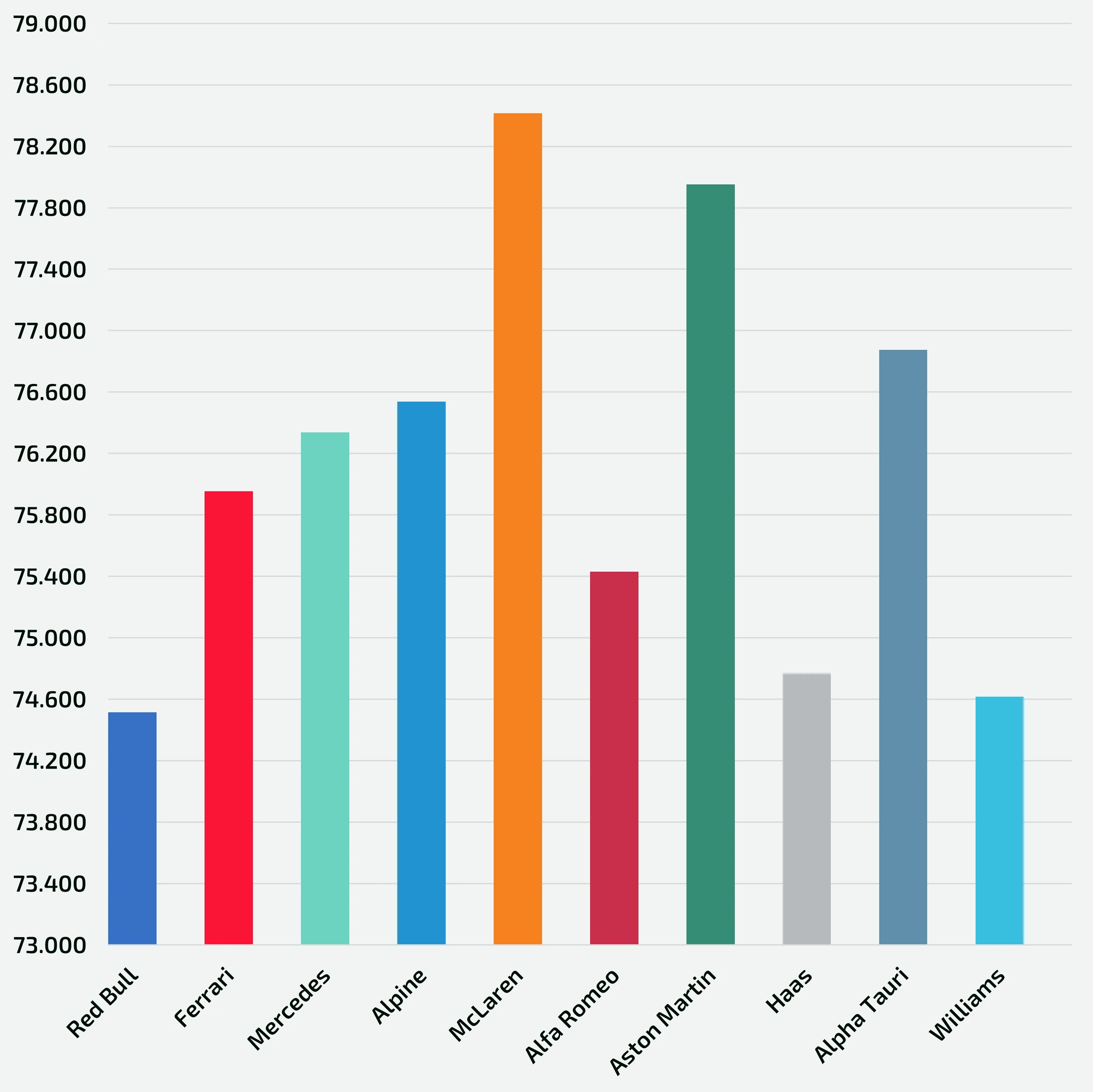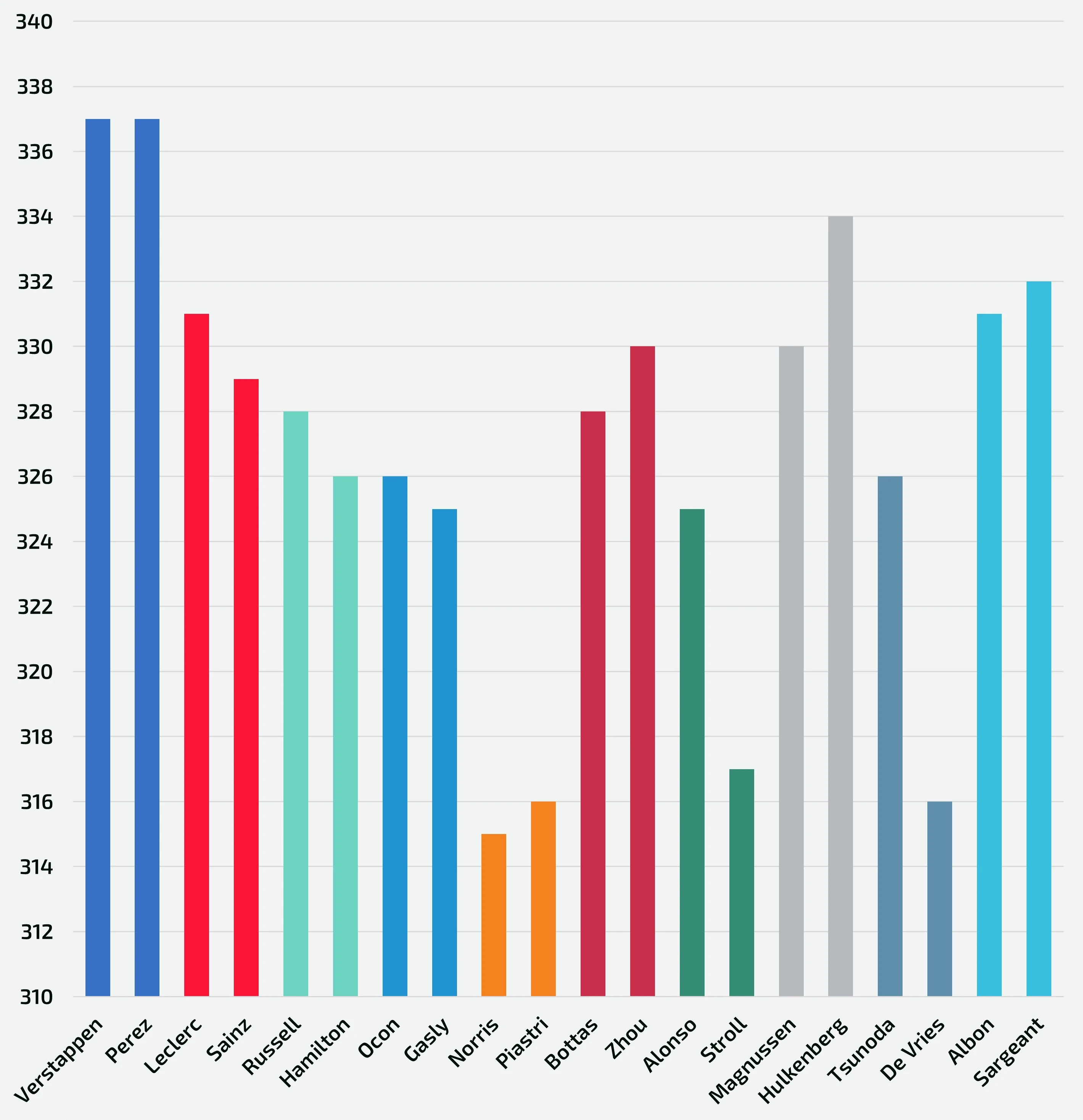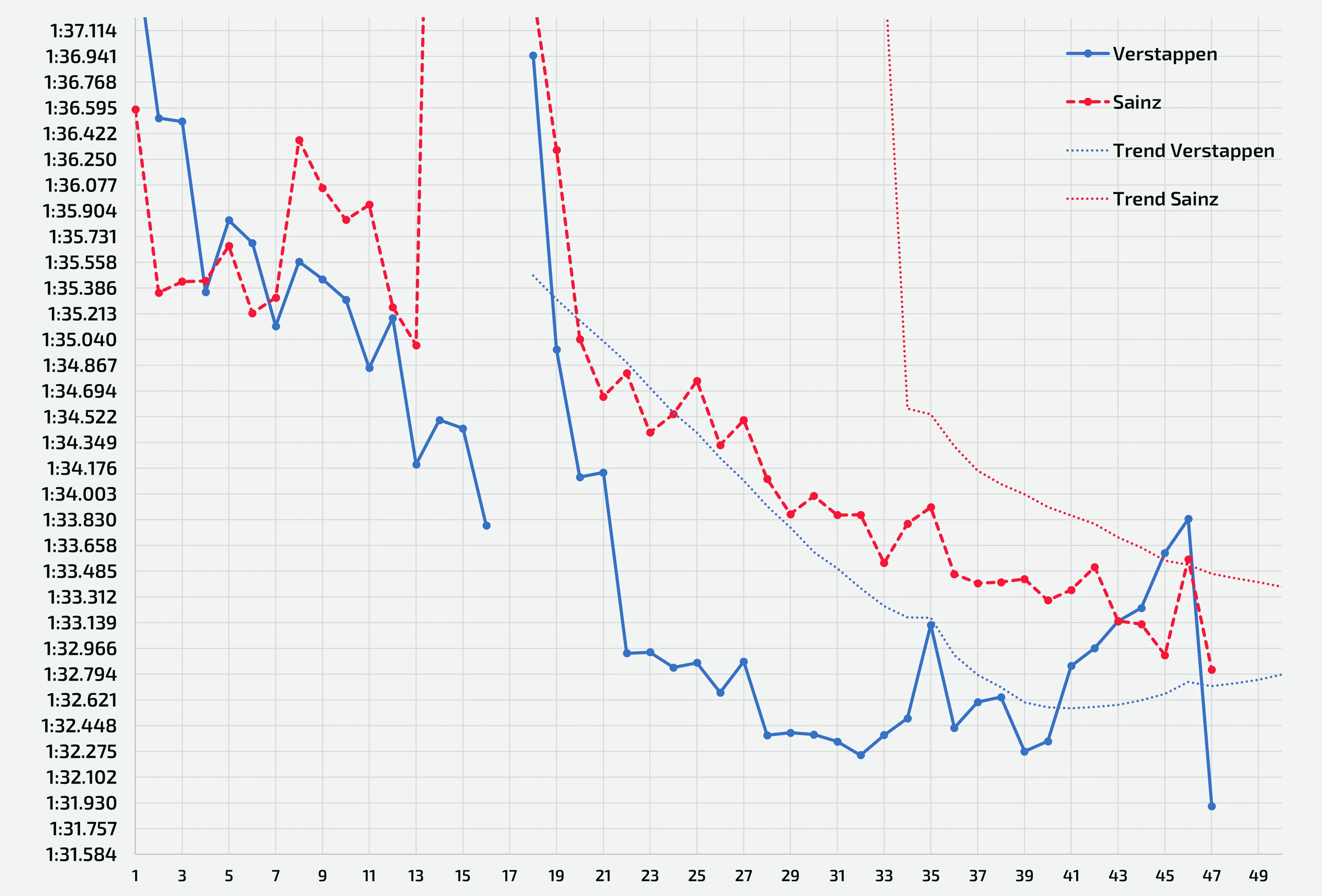
A nightmare start: what happens at Ferrari?
Just a month ago, on the eve of the pre-season testings in Bahrain, the statements of the Ferrari top management indicated the victory of the two World Championships (Drivers' Title and Constructors' Title) as the objective for 2023. Flash-forward to today, and the Scuderia comes out of the Bahrain Grand Prix with a retirement for Charles Leclerc and a fourth place for Sainz, and from the most recent Saudi Arabian Grand Prix with a sixth and a seventh place, respectively with Sainz and Leclerc.
What's wrong?
Often, when a car has inherent problems, the drivers complain about a particular feature that limits performance and doesn't allow them to extract the maximum potential... think, for example, about last year's Red Bull RB18, which in the first races of 2022 manifested a strong understeer due to being about 15 kg overweight: as soon as this "overweight" was reduced (or eliminated, we don't know), for the opponents there has been no competition!
The Ferrari SF-23, on the other hand, does not present a particular problem, but overall it is at a lower level than its opponents (Red Bull, certainly, but also Mercedes and Aston Martin, which until the last race of 2022 were in the midfield!).
Mark Sutton/Motorsport Images
The objective of the engineers in Maranello when deliberating the shape of the SF-23 was to evolve the F1-75, a racecar initially very fast but that gradually lost gained performance - also due to the changes in ground clearance following the Technical Directive TD-039. And so we find ourselves with a starting grid in which all the teams, with the exception of the aforementioned Ferrari and its "team B" Haas, converge towards aerodynamic solutions that are still not considered in Maranello (see the sidepods downwash philosophy).
Andy Hone/Motorsport Images
The only "change of mindset" was seen in the quest for higher top speed, a factor that often saw Leclerc and Sainz succumb in close battles with Verstappen and Perez last year, capable of running 7-8 km/h faster down the straights. But, sadly, the races held in Sakhir and Jeddah have shown that this increase in top speed can only occur at the expense of aerodynamic downforce, and therefore cornering speed. The result? This year the RB19 not only continues to be faster down the straight, but it gains a disproportionate amount of laptime in the corners over the SF-23.

Load index in qualifying, Saudi Arabian Grand Prix

Top speeds achieved in qualifying, Saudi Arabian Grand Prix
As shown by the graphs of the load index and of the maximum speeds relating to the last qualifying sessions held, as soon as Ferrari decided to use higher downforce wings, the gap on the straights widens enormously: it's fair to say that for the SF-23 any trade-off setup choice hasn't been good enough to fight with the opponents.
Why is the SF-23 faster in qualifying than in the race?
After just two Grands Prix, the car's performance in qualifying has already become a defending point for Ferrari's Team Principal, Frederic Vasseur.
“In the last part of the race with the hard tyres we had an enormous lack of pace and we have to understand where it comes from, because for me it's not acceptable, and we have to correct it as soon as possible. It's unthinkable for a car to go on the front row in Qualifying and then nowhere in the race. I think it's more a tyre management problem and not a set-up or car design philosophy"
Frederic Vasseur
In short, the approach chosen by Vasseur aims to convey the message that the SF-23 has a lot of unexpressed potential, which is only shown in qualifying and - for reasons not yet well understood - not in the race. Ferrari fans must therefore hope that, with the appropriate corrective measures, the performances will be magically extracted.
Fortunately (or unfortunately, depending on how you look at it) I've seen over 20 seasons of Formula 1, and I've already seen cars that are very fast in qualifying but not as fast in the race. Two examples above all:
- The 2013 Mercedes W04, capable of signing 8 pole positions with Hamilton and Rosberg but then winning only 3 races on Sunday. Just think that in some of the races in which one of the two drivers started on pole, then they finished the race even more than 1 minute behind the winner!
- The 2019 Ferrari SF90, with which Vettel and Leclerc achieved 9 pole positions and 3 wins. In this case, however, the race wins often didn't come due to "procedural" errors in the race than due to poor performance, at least in the second half of the Championship... And the same could be said, to an even lesser extent, about the F1-75 of last year;
Well, what does the SF-23 have in common with the two cars mentioned? The fact it struggles to manage the tyres in the race!

Race pace of Verstappen (P2) and Sainz (P6), with trends of the race laps after the Safety Car period
As you can see from the graph above, the trends in the laps from the restart after the Safety Car period to the chequered flag show that Verstappen's laptimes improved much more than Sainz's. And be careful not to be fooled by the last 5 laps: there we witnessed Max's strategical genius at play, who deliberately slowed down to make his teammate believe he had "laid down his arms", only to then set a 1'31"906 on the last lap, a performance that earned him 1 point for the fastest lap in the race.
I therefore believe that the better performance of the SF-23 in qualifying compared to the race is due to two factors of equal importance:
- The talent of Charles Leclerc, who limited the car's problems in qualifying by being 0.154s in Bahrain and 0.511s in Saudi Arabia quicker than his team-mate;
- The possibility of finding the grip that doesn't come from the aerodynamics from the tyres, which have to cover only one lap at the limit of their possibilities;
With all due respect to Vasseur, therefore, the laptimes that Leclerc manages to set in qualifying must not be a mitigating factor for the disastrous results collected so far in 2023.
Development program: how crucial is the atmosphere in Gestione Sportiva?
After the first GP of the year, the resignation of David Sanchez (Head of Vehicle Concept), essentially the man responsible for the concept and development of the SF-23 project, caused a stir. Along with his farewell to Ferrari (to join McLaren, as reported by many sources), further rumours arose about the departure of other key men, such as Enrico Cardile: the idea behind these rumours is that in certain "command" roles there are trusted men of Mattia Binotto, people who don't reconcile with the leadership of the new Team Principal Vasseur.
Judging these rumours as true or false would be frankly impossible, not being able to experience the atmosphere that reigns in Gestione Sportiva. However, you don't need to be an insider to understand how even just the leaked rumours are an indication of a very turbulent situation, which is giving an immense pressure on those who have to work to make this single-seater competitive.
“Right now we need to know where we are going and what we are doing wrong. But we cannot fool ourselves. We have to change something after realizing the mistakes and we have to push. It's not enough to talk, because we certainly wouldn't be faster”
Frederic Vasseur
From this point of view, the absence of Sanchez certainly determines a "stall" on the validation of the aerodynamic development program of the SF-23, which has so far proved to be ineffective. So let's see how the car has changed from its presentation to today:
- During the third - and last - day of preseason testing a single-pillar rear wing was tested by Carlos Sainz, but its use time did not go beyond fifteen minutes, due to the failure of the DRS actuation mechanism; remember that the SF-23 was born with a double-pillar solution, that generally comes with greater aerodynamic drag;
- At the first round of the season (again in Bahrain) an attempt was made to make the single-pillar rear wing work again, mounting it on Charles Leclerc's car in the first free practice session on Friday. As everyone has been able to observe on TV, the wing moved conspicuously, and this made its use impossible. The solution was set aside for the entire Sakhir weekend;
- A different underfloor specification was tested, but after collecting some data during the free practice, it has no longer been mounted again in qualifying and the race. At the front, a small opening appears at the exit from the front wing endplates, which seeks to enhance the outwash effect: this too is a micro-aerodynamic solution. In short, nothing that can change the whole behavior of a single-seater. That's all? Not yet, as - finally - we are saw again the infamous single-pillar rear wing, which this time was installed in the car and never removed. Together with it, a new beam wing debuted, which can be considered as an adaptation to the aero load levels required by the Jeddah circuit.
Glenn Dunbar / Motorsport Images
All in all, efforts have been made to improve the current situation, but the next few months will be crucial to steer the development program in the right direction. And to fix the reliability issue once and for all. But that's another story…
Index
A nightmare start: what happens at Ferrari?